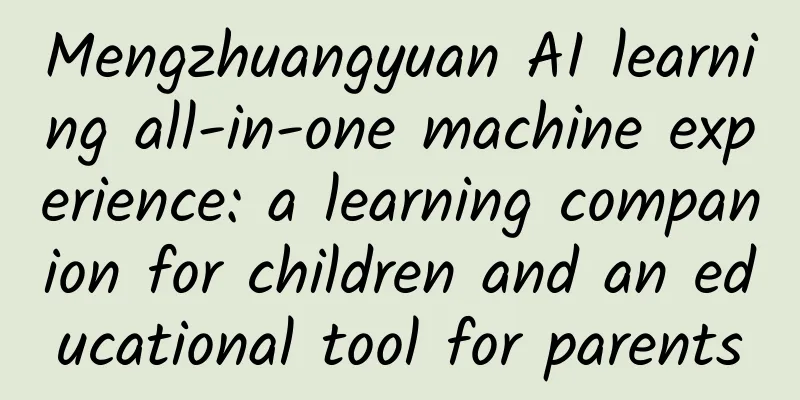Is the national pride behind the Chinese buyers' show coming a little too early?

|
Chinese people's "explosive buying" in Japan is no longer limited to ordinary consumers. Nowadays, Chinese companies' enthusiasm for acquiring Japanese companies is no less than that of tourists who frantically buy things in duty-free shops. In the first half of 2016, foreign institutions proposed to acquire assets of Japanese companies for a total of 3.8 trillion yen, a year-on-year increase of 77%, and most of these buyers were from China. Japanese companies are changing from crazy acquirers to being acquired. This year, Japanese companies' overseas acquisitions fell 70% year-on-year to 1.92 trillion yen, lower than last year's historical high. Behind the monetary transaction is the change of roles between buyers and sellers, but it more reflects the different transformation periods faced by Chinese and Japanese companies. Look at these Chinese people who are busy shopping. They are just like the Japanese people 30 years ago. Mergers and acquisitions have always been high-frequency words in China's business community. Just like a woman's desire to shop, "buying" can not only quickly provide blood transfusions to a company, but once it becomes news, it can also inspire people's national pride and enhance the corporate image. In the first half of 2016, we saw Hon Hai Precision decide to acquire Sharp, Midea acquire Toshiba's white goods business, and Lenovo also intends to acquire NEC's shares in the PC joint venture. In the first half of the year, Chinese companies' M&A of Japanese companies numbered 26, with a total value of 912.4 billion yen, 9 times that of the same period last year, setting a record high. What’s interesting is that history repeats itself dramatically while moving forward. In the late 1980s, with high housing prices and a rapid appreciation of the yen in Japan, Japanese companies also went abroad to acquire what they considered to be "relatively cheap" overseas projects. In 1989, Mitsubishi Estate spent $1.4 billion to purchase the Rockefeller Center, which was recognized as a "National Historic Landmark of the United States." In 1990, the Japanese spent $840 million to purchase the Pebble Beach Golf Links in California, the United States. Sebastian Malabe, a senior fellow at the Council on Foreign Relations, recently wrote in the Financial Times that the overseas acquisition "frenzy" launched by Chinese companies may have embarked on the same old path that Japan took in the past, and it is worth being vigilant. In fact, many of the overseas assets purchased by the Japanese at that time were poorly managed and could not be sustained, and the Rockefeller Center and Pebble Beach Golf Links were eventually sold back to the Americans at a lower price. To this day, some Japanese companies are still suffering the consequences of their buying spree. But some are optimistic about the acquisition. "The Chinese are much stronger in mergers and acquisitions because they know they can extract value from the acquired assets by relying on the Chinese mainland market. Japanese acquirers do not have such a strong local market to rely on," said Keith Pogson, senior partner of financial services at EY Asia Pacific. A transition period from 3.0 to 4.0 "Japanese companies are no longer viable" is the most common argument heard during this wave of acquisitions. Especially in the home appliance industry that Japan once took pride in, in the cases of Chinese capital acquiring Japanese companies in the past two years, from small items like toilet lids to large items like cars and even airplanes, although the demand for mergers and acquisitions has extended to all walks of life, the home appliance industry is still the most popular among Chinese people. The current situation is that half of Japan's four major home appliance companies, Panasonic, Sony, Sharp and Toshiba, have been confirmed to be acquired by Chinese companies. The situation of the home appliance industry, which used to be a three-way battle between China, Japan and South Korea, has gradually turned into a competition between China and South Korea, and most Japanese companies have chosen to withdraw from the battle. This is not because Japanese companies have fallen behind in the technology of the home appliance industry. In fact, they still have the core technology. Poor management and cost control are the main reasons for the continuous losses in the home appliance industry. Liu Buchen, an expert in the home appliance industry, believes that "the transformation of Japanese home appliance companies is similar to the voluntary withdrawal of American companies from the home appliance field forty years ago. Back then, Japan took over the baton from the Americans; today, China and South Korea are taking over the baton from the Japanese. However, global digital technology is still in the hands of the Americans; the Japanese still have a considerable portion of home appliance technology. We must clearly see that what Japanese home appliances are withdrawing from is manufacturing and sales, not technology and R&D." At present, Japan's original industrial system is under the impact of domestic aging and foreign low costs. In the "lost twenty years" in people's eyes, Japan's innovation direction has undergone tremendous changes. Panasonic has expanded from home appliance business to automotive electronics, residential energy, business solutions and other fields; Canon will turn to health care, robotics, smart homes, automobiles, food, water, air safety and education industries; after Sony acquired a stake in Olympus, the two parties jointly developed medical endoscopes and have occupied 80%-90% of the global market share in this field; Hitachi's nuclear power business has a technology called Yoko technology, which can accurately control the distance and aim it at cancer cells in the human body without harming normal cells. The common choice of the former Japanese home appliance giants was to gradually withdraw from the low-profit B2C business and vigorously cultivate the B2B industry. In other words, Japanese companies are currently in the same transition period as China, except that we are moving from 2.0 to 3.0, while they are moving from 3.0 to 4.0. Buyers and sellers still face a game Although there is a strong interest in acquiring Japanese companies, most domestic companies are not desperate and acquisitions are becoming more rational. In the past, Chinese companies were often in a state of confusion when acquiring foreign companies. They did not realize that they had spent a large amount of money to buy a hot potato that they could neither swallow nor throw away. They acquired the company simply for the sake of acquisition and were slow to come up with a plan for what to do with the company and how to continue operating it. This situation is changing. Now Chinese companies acquire Japanese companies mostly because they value the technology or brand value of the companies. This is a manifestation of the maturity of the China-Japan corporate M&A market. Take Midea as an example. In an interview with the Nikkei, Midea's senior management admitted that they made the acquisition for the sake of brand. "It was for the right to use the Toshiba brand. If we could not use the Toshiba brand, there would be no need for us to acquire Toshiba's white goods business." After acquiring Toshiba's white goods, Midea can use the "TOSHIBA" brand to sell them around the world in the next 40 years and win the trust of consumers. Although this method is simple and crude, it is the easiest to be effective in enhancing brand appeal. On the other hand, the frequent sale of declining businesses by Japanese companies has also exposed many crises. The common problem faced by the increasingly declining Japanese big-name companies is the fatal cultural shortcomings that are common in Japanese companies: lack of self-help ability, lack of self-reflection and lack of reform awareness. "Japan's biggest problem is conservatism and cowardice." Uniqlo founder Tadashi Yanai concluded in his self-analysis that "Japanese business people and companies lack personality." Unlike China, which encourages innovation and reform with great fanfare, in Japanese culture, inheritance and perseverance have always been considered the criteria for the longevity of a brand, which has also led to its lack of innovation awareness. In fact, major changes in Japanese society are also passive, lacking the ability to actively innovate. Japanese culture does not encourage subversion and innovation. Therefore, the Japanese companies mentioned above withdrew from the B2C business with meager profits and vigorously cultivated the B2B industry. Part of the reason was that they were forced to move forward quickly. Someone once jokingly asked, "For an entrepreneur as wealthy as Jack Ma, does he have other pleasures besides making money?" The answer was equally interesting: "Jack Ma is just like any other person. His pleasure in making money is buying things, except that he buys companies." From a simple joke, we can see that Chinese companies are collectively staging a buyer show, not just limited to acquiring Japanese companies. In recent years, Chinese companies' overseas acquisitions have been progressing at a rapid pace. Just now, it was reported that LeTV invested 1.5 billion US dollars to acquire the North American LCD TV brand VIZIO, adding another case of a Chinese manufacturer acquiring a global home appliance brand. Whether buying or selling, the brand is always the soul of an enterprise. In the game between buyers and sellers, no one wants to be the second Nokia that is sold again and again, nor does anyone want to be the unlucky buyer. Explosive buying does not mean success, and similarly, selling does not mean death. The additions and subtractions that companies are doing now will one day be tested by time. As a winner of Toutiao's Qingyun Plan and Baijiahao's Bai+ Plan, the 2019 Baidu Digital Author of the Year, the Baijiahao's Most Popular Author in the Technology Field, the 2019 Sogou Technology and Culture Author, and the 2021 Baijiahao Quarterly Influential Creator, he has won many awards, including the 2013 Sohu Best Industry Media Person, the 2015 China New Media Entrepreneurship Competition Beijing Third Place, the 2015 Guangmang Experience Award, the 2015 China New Media Entrepreneurship Competition Finals Third Place, and the 2018 Baidu Dynamic Annual Powerful Celebrity. |
Recommend
Get to know an insect every day: Hemispheric shield bug, Wang's notched green moth...
"Learn an insect every day" knowledge s...
Ren Zhengfei: Huawei has three major breakthroughs. If we want to be the best in the world, we must do it.
Huawei Xinsheng Community published an internal e...
"Space Photographer" Takes Action, Leaving More Than Just Beauty
Astronauts from home and abroad have taken many p...
Asian Winter Science Popularization Issue 5丨The "Breathing Magic" in Ice and Snow Sports and the "Healthy Code" of Cardiovascular Diseases
First instance: Sun Yu Second trial: Suo Yingxing...
Encouragement: Sharing the experience of failure in the first entrepreneurial project
If you don't do some things now, you may neve...
How does a brand use TikTok? The official finally gave the answer for the first time today!
I guess only blockchain conferences can be this p...
The King of Snakes - King Cobra
King cobra is the largest venomous snake in China...
Burn My Calories: Why can’t I lose weight even though I exercise every day?
Many people rely on exercise to lose weight, but ...
Is excess body fat obesity? How does a body fat scale know our fat content?
When a person decides to lose weight, the first t...
Tips for making popular short videos!
I have always wanted to interview Zhu Feng to tal...
The core methodology of user retention under refined operations!
With the disappearance of traffic dividends and t...
Which is healthier: eating a lot and not gaining weight or drinking water and gaining weight?
When it comes to weight loss, people are not crea...
Xiao Ming's short video traffic generation and monetization course is a must-have, super monetization rules, and the live broadcast room has gained 200,000+ fans in two days
Xiao Ming's short video traffic monetization ...
Are crazy yellow ants so "crazy" because they have two sets of DNA?
There is a kind of yellow ant that makes some irr...
The fastest growing IT jobs
[51CTO.com Quick Translation] The number of IT pr...









